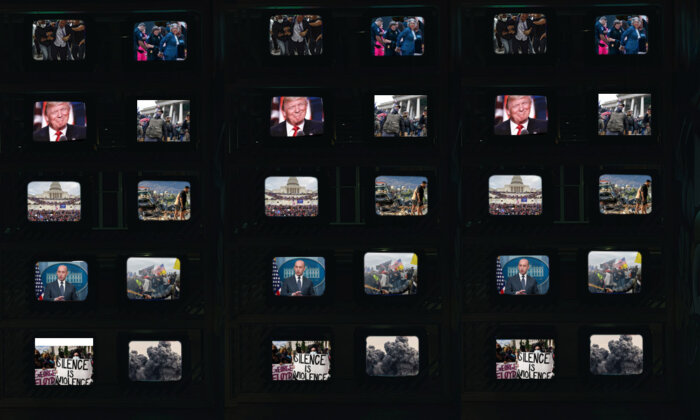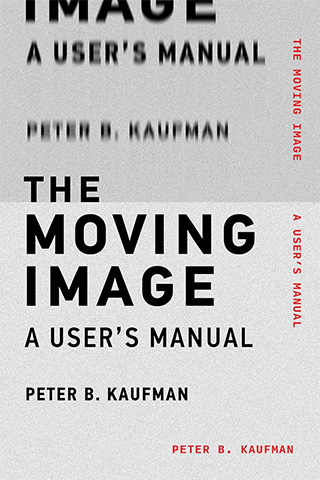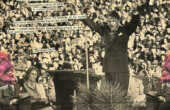The Most Powerful Medium Has No Rulebook

In the 1960s, when Peter L. Berger and Thomas Luckmann published their foundational work “The Social Construction of Reality: A Treatise in the Sociology of Knowledge,” television had just begun to play a central role in American life. By the end of that decade, one television could be found in more than 90 percent of American homes. Within a few years, two or more sets would be in most American households. Soon after that, we’d have more televisions in most of our homes than people.

Berger and Luckmann had begun discussing ideas for their book up in the Austrian Alps not even 20 years after the end of World War II. They had seen the ravages of war and, like prominent social scientists before them (Karl Mannheim, Ludwik Fleck, Max Scheler), had begun to wonder how hallucinatory ideologies had taken hold of so many minds — millions of minds — in the center of modern Europe.
“Reality,” Berger and Luckmann would explain, “is socially constructed,” by which they meant that you know what you know because you’ve learned it and reinforced it from the people and the messages circulating in the society around you. They drew on Marx and Nietzsche and Durkheim, but few people had stated this truth so clearly before. “[N]o human thought,” they wrote, “is immune to the ideologizing influence of its social context.” Along with many of the sociologists of knowledge whose work they admired, they had seen how newspapers, magazines, books, radio, and even early film had worked with schools, churches, clubs, associations, companies, unions, governments, and other powerful structures to affect people’s thinking about what they called “the reality of everyday life” in Europe. This process, they explained, is always in motion, working sometimes for the better but usually — especially when run through Nazi and then Soviet systems of totalitarian thought control — for the worse.
The real project of this administration is to sever the public from reality itself — to plunge Americans into a TV-led and TV-fed collective psychosis.
Sixty years after the book became a touchstone in sociology, the media world they had observed so carefully has changed. Today, the average American household not only has more than two televisions but 17 connected screens (counting TVs, desktops, laptops, tablets, mobile phones, and game systems), and that tally is projected to rise to 20 by the end of this year. Virtually every American household now receives television and video content in some form. Moving images — and the messages they and their ideologizing influences convey — are ubiquitous and on constant display. American “reality,” to use Berger and Luckmann’s term, is being constructed, and often determined, by what’s playing on screen.
During the 2024 U.S. elections, candidates from both parties spent more than $12 billion on political advertising, half of it on TV alone. Commercial advertisers spent billions more on television and online video ads. The people who run politics and consumer-facing businesses know that television can sway the will of the people.
And so does our federal government. Pundits today write about “the sweeping attack on human knowledge and progress” that Donald Trump is undertaking; they call out the Administration’s “deliberate destruction of education, science, and history,” undertaken with “a fanaticism that recalls the Dark Ages.” Others describe the “cabal of nuttery” occupying the White House: a full array, some call it, of “misfits, cranks, neo-Nazi sympathizers, demagogues, anti-constitutionalists, and habitual liars.” But that’s only half the story. The real project of this administration is to sever the public from reality itself — to plunge Americans into a TV-led and TV-fed collective psychosis that they’ve been consistently inducing.
Consider the following:
Trump rose with and through this medium. “The Apprentice,” the television program in which he starred as a powerful, infallible leader, ran on major networks for 13 years. Because it served therefore as 13-year-long advertisement for Trump, who in fact was nothing like the business savant he played in the show, one of our most observant cultural critics has dubbed it “the most consequential TV show in history.”
As he began a career in politics, the television and media assets of NewsCorp / Fox elevated and sustained him, almost nonstop. Fox News is the highest rated news program on television, year after year. New York Times reporters have written, also with superlatives, that “No two news companies have done more to reshape the modern geopolitical order than Fox Corporation and NewsCorp.” The shows they promote are repetitive, almost hypnotic, and often poisonous.
Upon winning his second presidential election in 2024, Trump invited to his inauguration the companies who control most of the pipes and passageways into our screens and speakers. And they accepted. You can see them in the photos (and the video) of the event standing together with NewsCorp chairman Rupert Murdoch: the heads of Apple, Amazon, Alphabet, Bytedance owner of TikTok), Meta, and X, all alongside the video podcasters whose shows he chose to grace during the campaign instead of appearing on “60 Minutes.” Not so much tech bros. More like screen bros.
After taking office, Trump appointed dozens of Fox News hosts and TV commentators as Cabinet members and senior advisor positions — so many, in fact, that Deadline described it as the “revolving door” between television and the White House. The Secretary of Education, Linda McMahon, ran the World Wrestling Entertainment channels and global media franchise. Pete Hegseth, a weekend Fox News personality, was tapped as Secretary of Defense. Running Medicare and Medicaid? TV’s Dr. Oz! The Cabinet looks like a NewsCorp green room.
The National Security Advisor is said to be turning the presidential daily briefing into a daily video presentation, with Fox News graphics, for a chief executive who does not like to read.
Indeed, the Oval Office has become a television studio, theater, and screening room. The Trump-Zelensky summit, showcasing Trump dressing down the leader of war-torn Ukraine, ended with the President declaring that, if nothing else, the confrontation would “make great television.” His meeting with the president of South Africa featured video that the President VJ-ed trying to prove Black racists were overrunning his visitor’s country. This awareness of television’s power also drives a production sensibility in the White House. The National Security Advisor is said to be turning the presidential daily briefing into a daily video presentation, with Fox News graphics, for a chief executive who does not like to read. And the quest for higher TV ratings and more positive coverage on Fox now drives our foreign policy and most momentous military decisions.
Television is the most consequential medium of our time. Whoever controls it — the moving image and the screens that it appears on — controls almost everything.
I started writing “The Moving Image: A User’s Manual” 15 years ago simply because I thought it would be good to be able to cite film and sound with the same facility that we can cite text today in footnotes, endnotes, and bibliographies — and maybe start building a critical apparatus for moving images equivalent to the one that has accreted around six centuries of our work now with the printed word. There has been, up to now, no “Chicago Manual of Style” or “Elements of Style” for this side of the house. These guidebooks and the others like them (the professional trades of journalism and law, for example, each have their own) give scant if any attention to the moving image even though the moving image is the emerging medium of record: a key, even the key source of evidence, for crimes like the murder of George Floyd, insurrections like the attack on the Capitol in 2021, or the war crimes being committed today with our weapons and tax dollars around world. Justice and accountability now depend on the moving image even though our facilities to quote and clip it are still wanting.
We all know, more or less, how to cite a passage in, say, John Steinbeck’s novel, “The Grapes of Wrath.” We all know how to approach text and sentence structure and syntax and grammar because we’ve had 6,000 years of writing and some 600 years of print in which to sort it out. Here’s a passage from the book:
Joad looked into the bedroom— no bed, no chairs, nothing. On the wall a picture of an Indian girl in color, labeled Red Wing. A bed slat leaning against the wall, and in one comer a woman’s high button shoe, curled up at the toe and broken over the instep.
Joad picked it up and looked at it. “I remember this,” he said. “This was Ma’s. It’s all wore out now. Ma liked them shoes. Had ’em for years. No, they’ve went— an’ took ever’thing.”
The sun had lowered until it came through the angled end windows now, and it flashed on the edges of the broken glass. Joad turned at last and went out and crossed the porch. He sat down on the edge of it and rested his bare feet on the twelve-by-twelve step. The evening light was on the fields, and the cotton plants threw long shadows on the ground, and the molting willow tree threw a long shadow.
Casy sat down beside Joad. “They never wrote you nothin’?” he asked.
“No. Like I said, they wasn’t people to write. Pa could write, but he wouldn’. Didn’t like to. It give him the shivers to write. He could work out a catalogue order as good as the nex’ fella, but he wouldn’ write no letters just for ducks.” They sat side by side, staring off into the distance. Joad laid his rolled coat on the porch beside him. His independent hands rolled a cigarette, smoothed it and lighted it, and he inhaled deeply and blew the smoke out through his nose. “Somepin’s wrong,” he said. “I can’t put my finger on her. I got an itch that somepin’s wronger’n hell.
Citing that passage is easy:
John Steinbeck, The Grapes of Wrath (New York: The Viking Press, 1939), 42.
In John Ford’s 1940 film of the novel, these 283 words from the book are condensed into the following dialogue, featuring seven camera shots edited across 14 seconds:
“They’re all gone, or dead.”
“They never wrote you nothin’?”
“Naw, they wasn’t people to write.”
“This Ma’s, she had ‘em for years.”
How do you cite that? How do you quote it — not like I’ve done here by snipping the script, but with an actual clip from the film? And how do you gain not only the comfort level and the technical facility to do so, but the affirmation from society and copyright law that it’s okay to throw a chunk of video on a screen and analyze and dissect it, like we do with print? (For that, you’ll need to pick up the book!)
Why is this important? It’s important because this is the most consequential medium of our time. Even so, when the Washington Post created a database of Trump’s lies from the first term, almost 31,000 of them, it was all … text. But the lies were told in live, televised events over video. If we can’t quote and punch back as a society with a video database of those lies, built like this text database, we’re bringing a butter knife to a gun fight. It’s important because of all the evidence from the January 6th attempted overthrow of our government, thousands of the key pieces were video. It’s important because the moving image is the key way people receive information and develop their understanding of facts.
Justice and accountability now depend on the moving image even though our facilities to quote and clip it are still wanting.
It’s time now to recognize the power that this newish medium — born only in 1895! — has on our thinking and framing of reality, and then imagining cognates to the dowsing rods and divining rods that have been guiding us through the print universe for the past century-plus. An “Elements of Style” — for video! A “Chicago Manual” and “AP Stylebook” — for video! An automated citation generator for every responsible video platform! A giant disinformation aggregator like the Washington Post has built — but built of video! A video Wikipedia! And systems of clicking through web-based programming to find original source materials and references, verifying facts and provenance like you can with text online in journals and newspapers and encyclopedias.
We ought to look more systematically at our video production, distribution, and preservation practices to explore how to wean ourselves away from dependencies on companies (Alphabet, Amazon, Apple) that operate outside (sometimes far outside) the public interest. And we have to take advantage of channels and new networks and platforms and repositories that we can build and control — like Wikipedia and the Internet Archive today, and who knows what tomorrow.
The challenges, of course, are huge. Film and television were not designed as truth-telling media. But neither was print. Indeed, its earliest years, print was used to propagate copious amounts of fake news and propaganda. Berger and Luckmann were onto something. They had deep insights and a felicity of style. They wrote of “Chthonic mystagogues” — and the relationship of media in sustaining all kinds of beliefs, including religion — and the media’s “central position in the economy of reality-maintenance.”
But perhaps it’s another observer from the 1960s, the historian and Librarian of Congress Daniel J. Boorstin, who nailed it even more directly. In “The Image: A Guide to Pseudo-Events in America,” he wrote about the “thicket of unreality”: the “fog,” he called it; “illusions” that “flood our experience”; the “penumbra between fact and fantasy” that modern media technologies were beginning to create “between us and the facts of life.” “The very same advances” in technology that have made the mass reproduction of images and moving images possible, he wrote, “have also made the images — however planned, contrived, or distorted — more vivid, more attractive, more impressive, and more persuasive than reality [there’s that word again!] itself.”
That also was 60-plus years ago.
We’d better get cracking.
Peter B. Kaufman works at MIT Open Learning. He is the founder of Intelligent Television, a video production company that works with cultural and educational institutions around the world, and the author of “The New Enlightenment and the Fight to Free Knowledge” (Seven Stories Press) and “The Moving Image.”



